The Independent's journalism is supported by our readers. When you purchase through links on our site, we may earn commission. Why trust us?
10 best compact system cameras
Whether you’re off on holiday or want to take snaps of the kids, create high-quality pictures with a lightweight CSC

Your support helps us to tell the story
From reproductive rights to climate change to Big Tech, The Independent is on the ground when the story is developing. Whether it's investigating the financials of Elon Musk's pro-Trump PAC or producing our latest documentary, 'The A Word', which shines a light on the American women fighting for reproductive rights, we know how important it is to parse out the facts from the messaging.
At such a critical moment in US history, we need reporters on the ground. Your donation allows us to keep sending journalists to speak to both sides of the story.
The Independent is trusted by Americans across the entire political spectrum. And unlike many other quality news outlets, we choose not to lock Americans out of our reporting and analysis with paywalls. We believe quality journalism should be available to everyone, paid for by those who can afford it.
Your support makes all the difference.The popularity of compact system cameras (CSCs) has grown exponentially since they were first introduced by Panasonic back in 2008. In the near decade since, pretty much every manufacturer has got involved with the concept (to varying degrees of success).
While it took traditional manufacturers, such as Canon and Nikon, longer to launch models, the technology was propelling other brands forward. Cameras in this sector display lots of innovation, whether in the form of miniaturisation or specs that entice even the most diehard DSLR (digital single-lens reflex camera) fan.
But what exactly is a compact system camera? It’s the rather clumsy name that’s been given to any camera which is capable of accepting different lenses, but is not a DSLR. Just like DSLRs, they have large sensors, but the biggest difference is that there is no mirror – so you’ll often hear these cameras also referred to as “mirrorless”.
The lack of mirror allows for cameras to be smaller and lighter, but means that an optical viewfinder is out of the question.
When it comes to sensor sizes, you generally have three choices for CSCs. Full-frame is the largest, APS-C is smaller again, while Four Thirds is the smallest. All of these sensors are still considerably larger than ones you would find in the average smartphone or compact camera, though. While a larger sensor generally equates to higher image quality, having a smaller sensor means you can keep the overall system smaller and lighter.
In terms of resolution (megapixels), anything over 16 is more than enough for the average user – only go for something with a super high number if you’re often photographing very fine details. Video recording is offered as standard in pretty much all cameras now, but 4K is starting to become the norm too.
In this round-up, we take a look at some of the best compact system cameras currently on the market, designed for a range of different users and budgets. They were tested not only for how well they take pictures, but for how easy they were to use, the features they offer to both the photographer and the videographer, as well as taking into consideration the price.
1. Sony A6500 Mirrorless Digital Camera Body Only: £1,132, Park Cameras
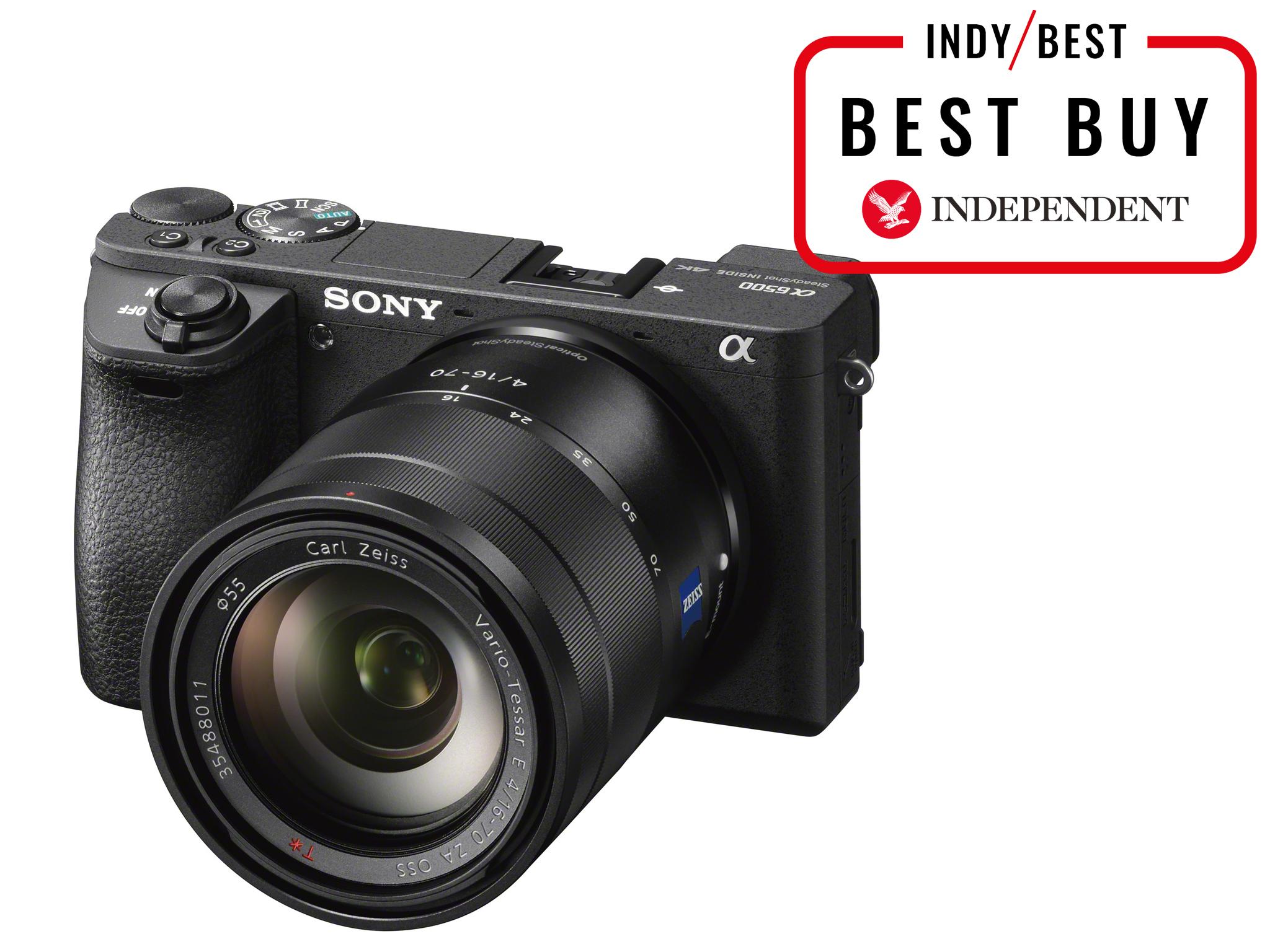
Sony’s CSCs are split into two categories; full-frame and APS-C. The A6500 sits atop the company’s APS-C line-up, but offers some high-end specs that you might normally associate with professional level cameras. The A6500 has one of the smallest bodies in this list, but still manages to fit enough direct control dials and buttons for enthusiasts to feel at home. A bright and clear viewfinder is joined by a touch-sensitive tilting screen, which you can use to set the AF point or fire off a shot. Fast shooting (11fps) is available, as is 5-axis image stabilisation to help you keep your images as sharp as possible.
2. Sony A9 Mirrorless Camera Body Only: £4,499, Jessops

With the A9, Sony is managing to convince professional photographers to take the brand seriously, with a host of specs that outmatch even the best DSLR on the market. Particularly appealing to sports, wildlife and action photographers, the A9’s party-piece is that it can shoot at an incredible 20fps completely silently. What’s more, autofocusing is swift and accurate, allowing you to keep up with speedy subjects. The 24.2 megapixel full-frame sensor has a special design that’s also primed for speed, while other features include 4K video recording, a high-resolution electronic viewfinder, dual memory card slots and a tilting touch-sensitive screen. It doesn’t come cheap though, so you’ll need a professional budget.
3. Panasonic GH5 Body Only: £1,699.95, John Lewis

Sitting at the top of Panasonic’s compact system camera line-up, the GH5 is ideal for both photographers and videographers. It features a 20.3 megapixel Four Thirds sensor, a 3.2-inch vari-angle touchscreen and very high resolution electronic viewfinder. Panasonic’s USP comes in the shape of 4K photo and, new for the GH5, 6K photo. This allows you to extract stills from video, meaning you can capture action at up to a staggering 60fps. So, for every second of action, you have 60 different frames to choose from, making it almost impossible to miss the crucial expression or moment. For videographers, cinema 4K is available at frame rates up to 60p – a first for the market.
4. Fuji X-T2 Compact System Camera Body Only: £1,399, Argos
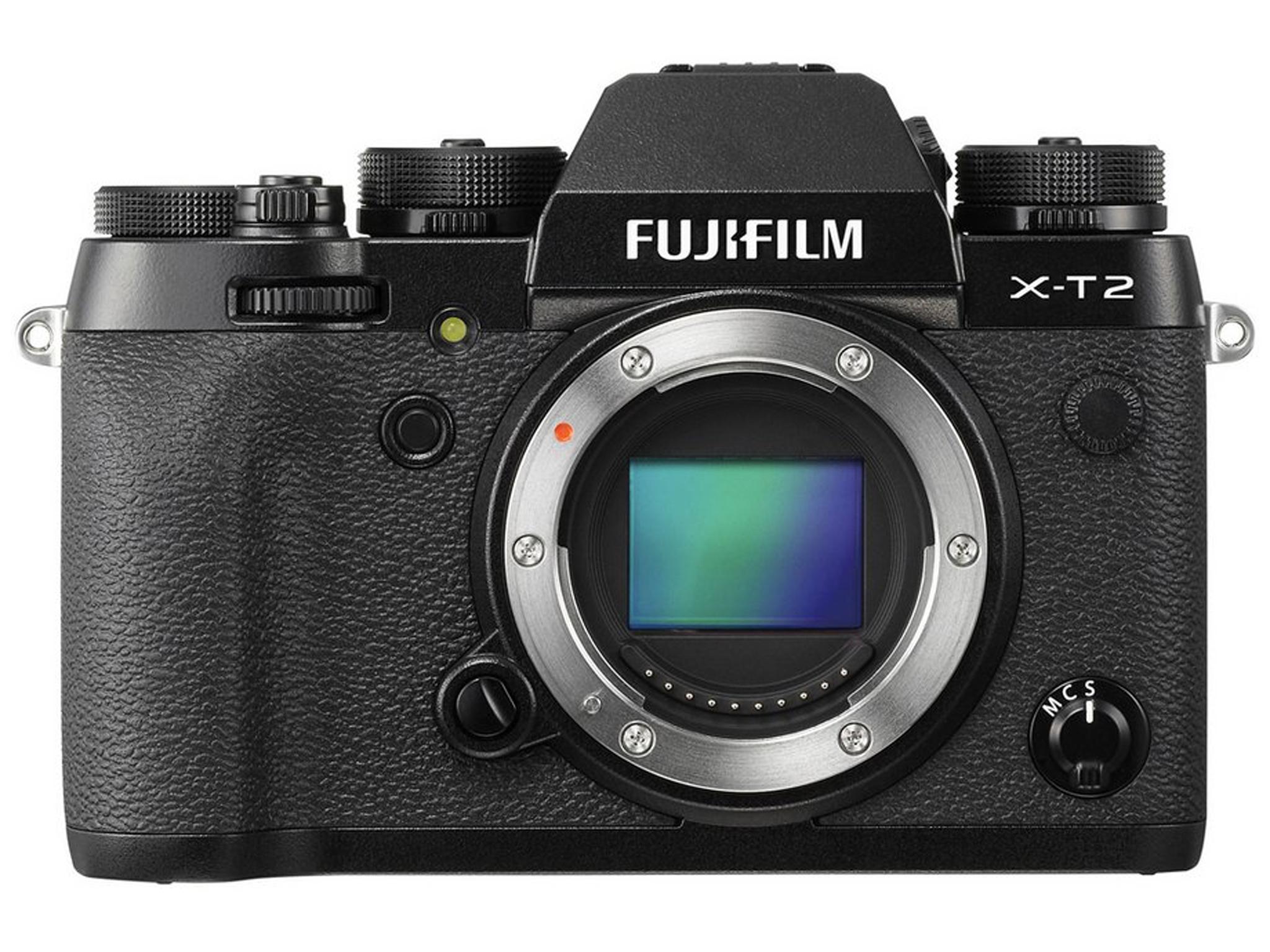
Fuji’s rather gorgeous X-T2 manages to perfectly combine style with substance. Yes, its retro stylings are very attractive, but it’s got a raft of high-end features to make it superb to use too. There’s an APS-C sized X-Trans CMOS sensor (which means it’s primed for high detail), 4K video recording, an excellent viewfinder, a tilting touch-sensitive screen and a range of dials and buttons giving direct control to key settings. It can also shoot at 14fps, making it a decent contender for sports, action and wildlife photography – if not quite on a par with the top-end offerings from other manufacturers here.
5. Olympus OM-D E-M1 Mark II Digital Mirrorless Camera Body: £1,849, Park Cameras

The awkwardly named OM-D E-M1 Mark II is a seriously impressive model from Olympus, which shares the Four Thirds format with Panasonic. Here we have a 20 million pixel sensor, 4K video recording, dual SD card slots, and a high resolution electronic viewfinder. It can shoot at a seriously impressive 18fps at full-resolution with tracking focus, or, an incredible 60fps if you’re happy to forego focus tracking. The camera has a superb image stabilisation system which allows you to shoot at slow speeds without introducing image blur. The downside here is the high asking price, but you get a lot of superior specifications for your cash.
6. Fuji X-T20 Mirrorless Camera and XC 16-50mm Mark II Lens: £899, Park Cameras

Fuji often puts some of its top-of-the-line technology into those cameras that sit a little further down the line. Such is the case with the X-T20, which is basically a junior X-T2. In fact, it’s got the same 24.3 megapixel X-Trans sensor and is also capable of recording 4K video. For the price saving, you don’t get weather-sealing, there’s only one card slot, and the viewfinder is smaller (but still very useable). You get to keep 14fps shooting, and a decent array of dials and buttons for speedy access to key settings, though.
7. Panasonic G80 Kit with 12-60mm Lens: £799, John Lewis
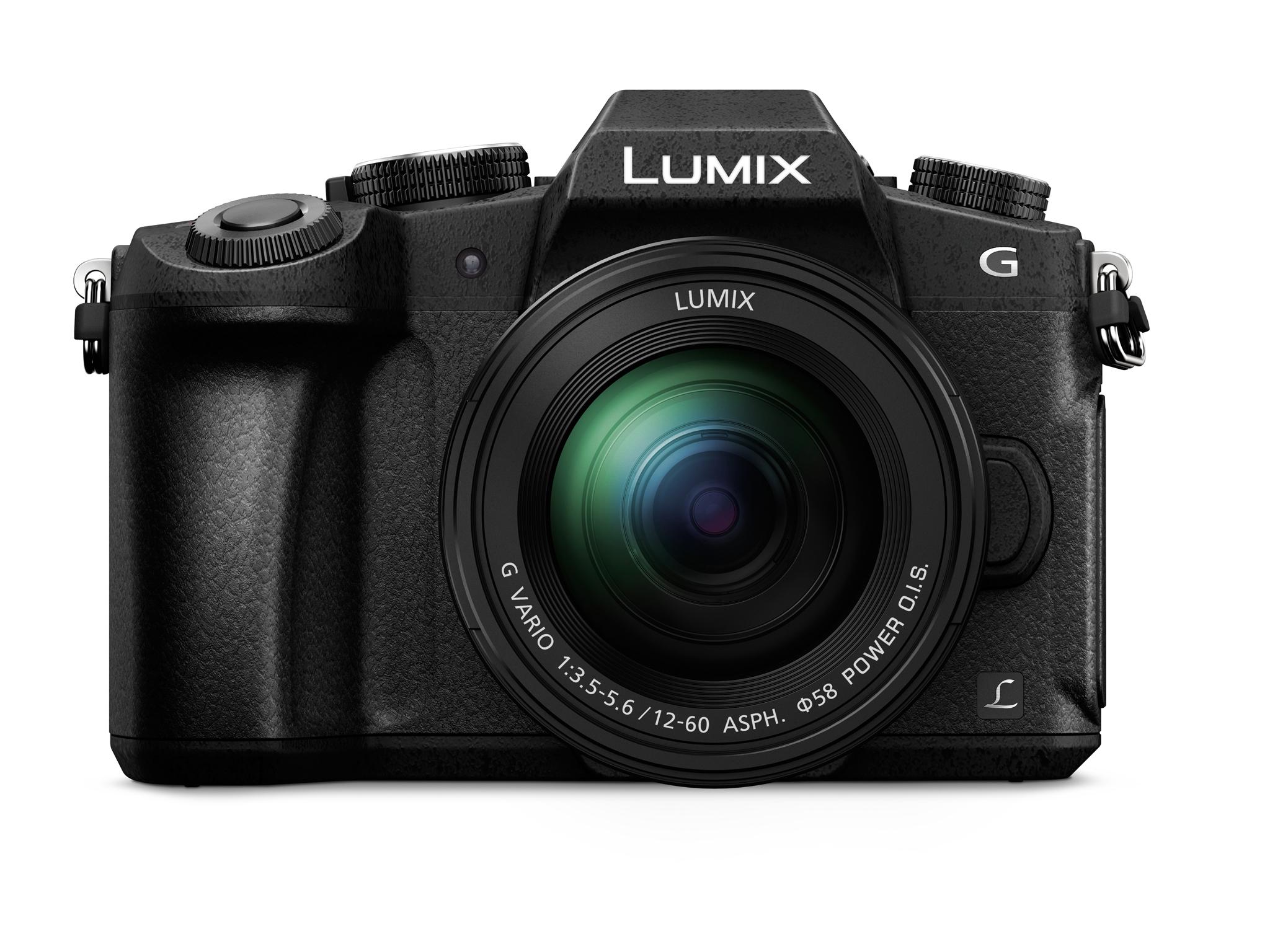
Panasonic’s mid-range CSCs come with some of the technology from its range-topping GH5 in a smaller and more affordable body. The G80 is classically DSLR-styled, with a functional viewfinder, an articulating touch-screen and plenty of customisable buttons to give you quick control. This being a Panasonic, it has 4K photo on-hand, which gives you the option to grab stills from video shot at up to 30 frames per second – perfect for capturing the movement of a fast-moving child or pet. In short, you still get a slew of appealing specs at a more affordable price than the GH5.
8. Canon EOS M5 Mirrorless Camera with 15-45mm Lens: £999, Jessops
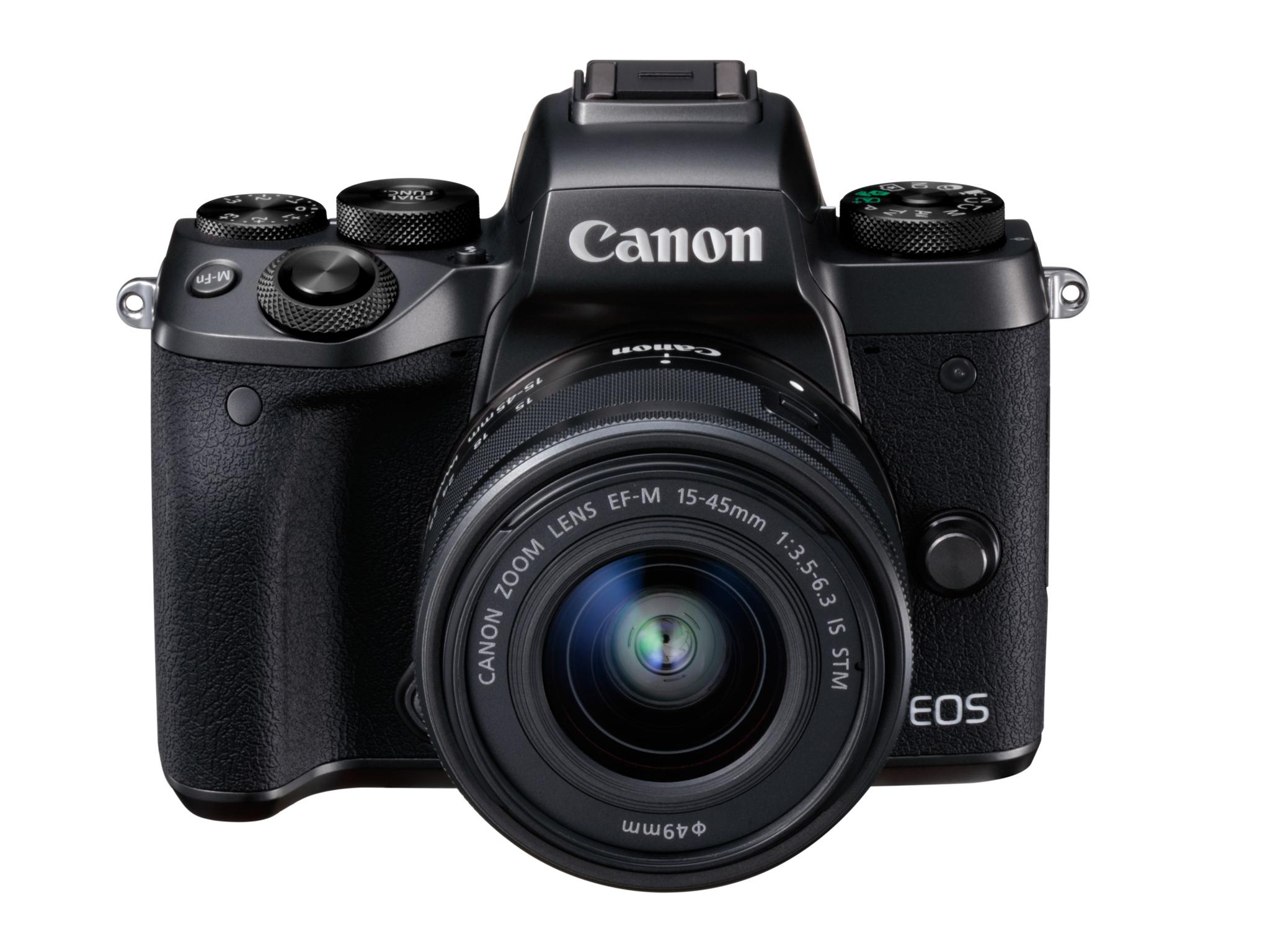
Canon was a little late to the CSC game, but nevertheless, the M5 is a very nice camera which should appeal to existing Canon users. Although the M5 uses a different mount from a Canon DSLR, you can buy an adaptor which allows you to use all your existing lenses. You also get a high-resolution viewfinder, a useful touch-sensitive screen and a 24.2 megapixel APS-C sized sensor (the same as you’d find in a DSLR). On the downside, there’s no 4K video recording available here – something to consider if you’re a keen movie-maker, but probably of less concern to most casual photographers.
9. Olympus PEN F Compact System Camera with 17mm Lens: £1,149, John Lewis
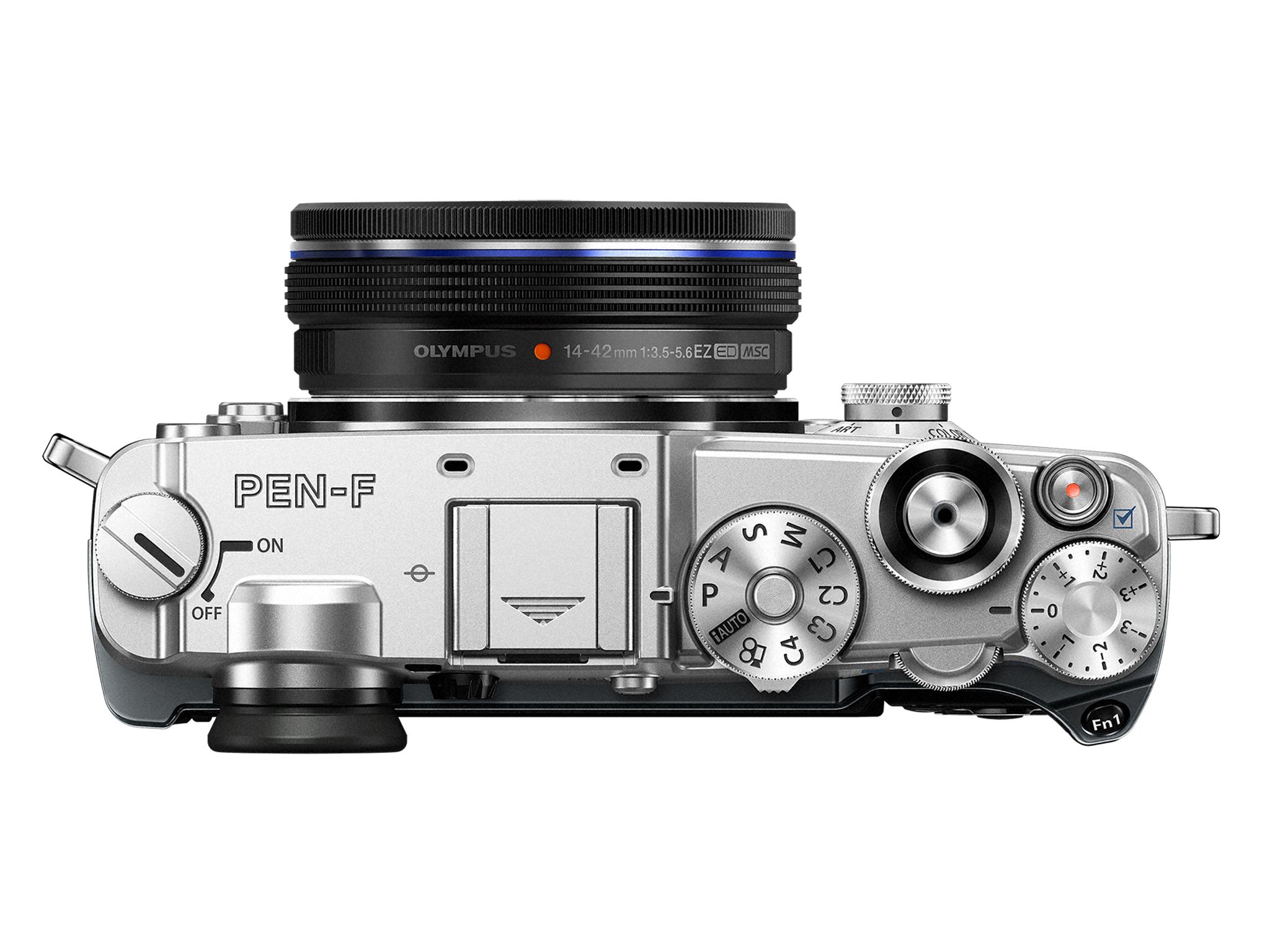
The Olympus PEN F is so satisfyingly old-school that you may be forgiven for thinking it’s an analogue camera at first glance. It’s got some excellent features in that pretty body too, with a 20.3 megapixel Four Thirds sensor, 10fps shooting, an articulating touchscreen, a high-resolution electronic viewfinder and all the dials and buttons you could ever wish for. There’s no 4K video available here, but with looks like this, it’s definitely aimed at the dedicated photographer, rather than film-makers.
10. Panasonic GX80 Mirrorless Camera with 12-32mm lens: £519, Currys

A slim and stylish mid-range offering from Panasonic, this camera is ideal for those who are keen photographers but don’t necessarily want to spend big. You get a 16 megapixel Four Thirds sensor, a tilting touch-sensitive screen and Panasonic’s special 4K Photo mode for grabbing stills from video. Advanced enthusiasts will probably lament the lack of dials and buttons, but, that’s not who this camera is for. The viewfinder is on the small side, so you may find you reserve use of it for when the sun is too bright for the screen, but otherwise this is a well-specced camera for the price.
The Verdict: Compact system cameras
There’s a staggering amount of choice on the market right now, which is great news for finding something that matches your exact needs and budget. Image quality from all of these cameras is fantastic, so choosing between them will likely come down to handling, and the specifications to help you get the shot you want. The Sony A9 is without doubt one of the best cameras on the market right now (CSC or otherwise), but there’s no getting away from the fact that it commands a very high asking price which is beyond the realms of most hobbyist photographers. If we have to single out one for special mention, the Sony A6500 is a good all-rounder option, which suits a variety of different users or needs. Those looking more towards the budget end of the scale are well served by the Panasonic GX80 and the Fuji X-T20.